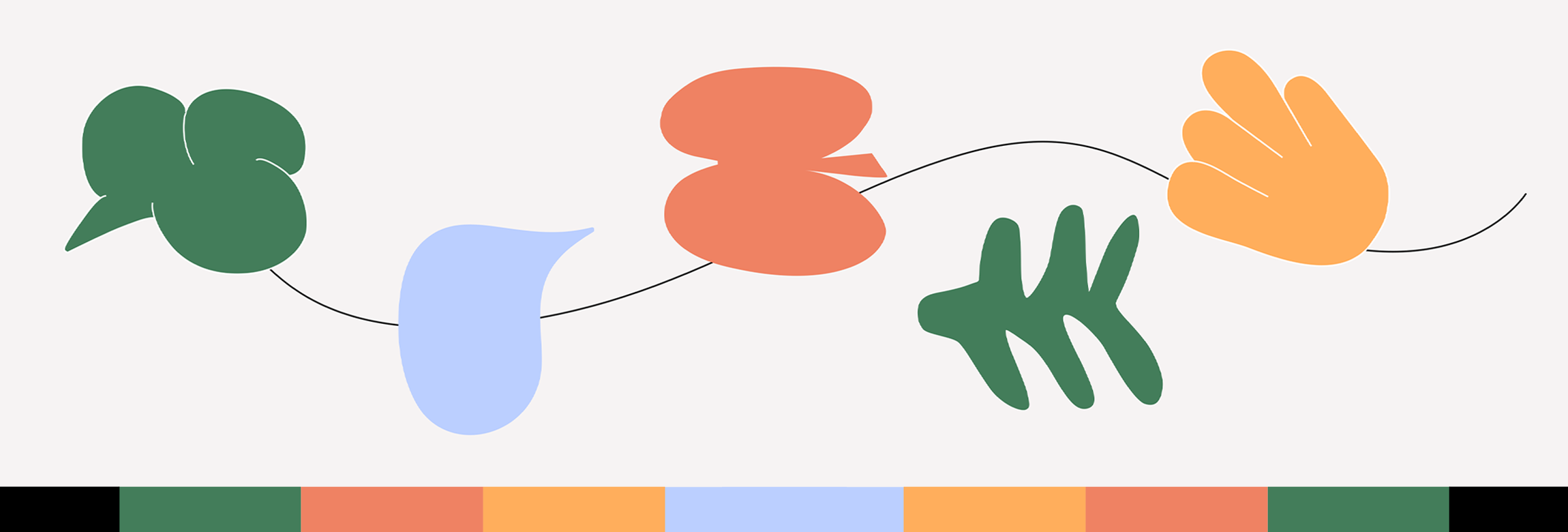Learning Guide
Key Themes
The key themes are thematic focal points that anchor the conversations around care for each dispatch. They can be used by educators and facilitators to prepare for learning, drive and structure conversations, and plan for connections to media/art/current events/personal contexts.
1.
Public Health & The Party
Public health research shows that having many microconnections or “weak tie” relationships is actually an extremely important protective health factor, even more so than “strong-tie” relationships. Weak ties are a low-impact way of being recognized, they provide opportunities for connection, and they offer new information and experiences. The parties provide this space for thousands of people each week to see, be seen, and interact at the depth they choose in a non-competitive, joyful environment.
2.
The Party as a Space of Resistance & Archive
Rich plays a lot of different kinds of music, but much of it finds resonance and power in communal settings, from Fela Kuti’s use of the Shrine as a place of cultural and political organizing, to the joyful hedonism of disco and house in places like Paradise Garage or the Loft, to the block parties of hip hop’s early DJs and MCs. Rich’s online parties draw a line between the joy, resistance and nourishment of party-based music and his own efforts to create a communal experience across the isolation of the pandemic. In this sense, Rich plays a dual role - instigating new communal spaces of connection, while contributing to the archive of Black musical expression.
Video Guide
Part 1
1
What does Rich mean when he says music in the church was about “finding solace in things that are free of solace by design?" Why is his experience of the Black church important to understanding how he sees the club/dance party as a space of freedom?
2
Why is there resistance to seeing parties and spaces of celebration as elements of getting free from various forms of oppression? Do you think “the party” has a place in larger movements for freedom from oppression? Share why or why not?
Party as Congregation
1
Rich describes a party scene and draws some parallels to church. What are some of the ways he sees this experience in the club as a religious experience?
2
How is the dance floor a space of care? What are other spaces of leisure, joy, and celebration that are sights of care? How do they care for people?
3
What is at stake if we lose “the party” or other spaces of joy and celebration? What are some threats to “the party?”
Redefining Together
1
2020 marked a time where many people tried to make the virtual space as human as possible. What do you think Rich means when he says “human” to describe a virtual space?
2
What are some examples of virtual spaces that you engage with that are “human?" What makes them feel “human?"
Archiving as a duty to ancestors
1
Why is archiving an important practice?
2
What types of archives have helped you understand who you are? (These can be informal or formal archives — an older sibling's music collection, older comics, libraries, YouTube videos showing different dance styles…)
Extended Learning
Freedom is a Feeling Party
Imagine you are asked to host a party called “Freedom is a Feeling.” Create a playlist of 5-10 songs that you would play at this party. The playlist should include at least one of each of the following:
- A song that came out before you were born
- A song that was released in 2020
- A song with no words
- A song from your childhood
Building Your Archive of Care
Build an archive of 5-10 things that have cared for you through your life. The following are some ideas of things to include, but feel free to add things not listed:
- Photographs
- Videos (personal or online)
- Music
- Books, articles, poems
- Art
- Colors
- Food
- Clothing
In writing, explain how each item has cared for you. In writing, explain the value in creating this archive? Who will benefit from it in the future?

